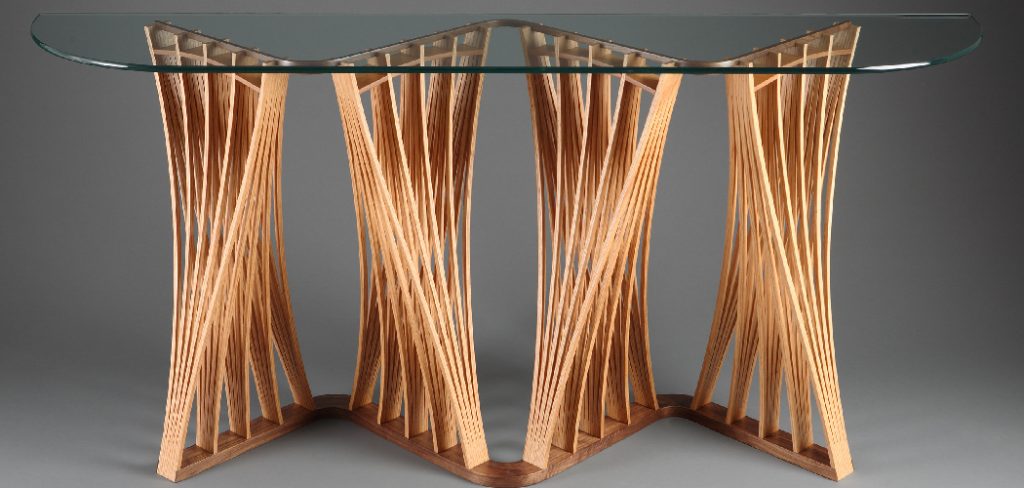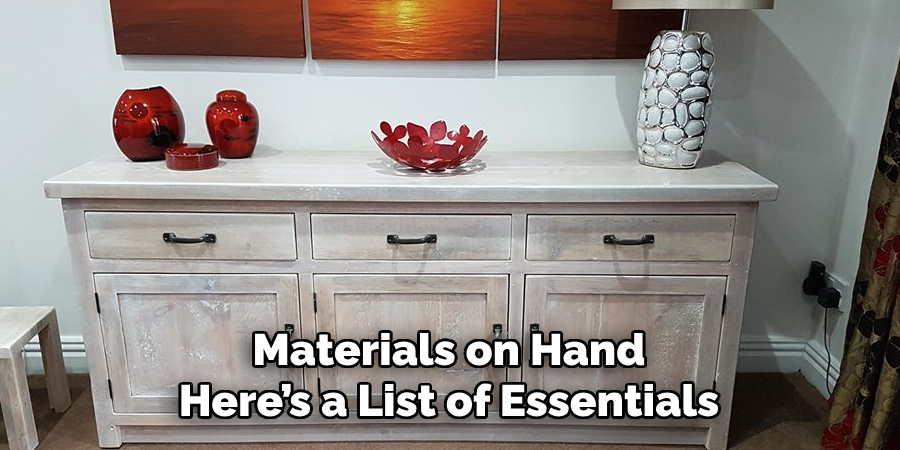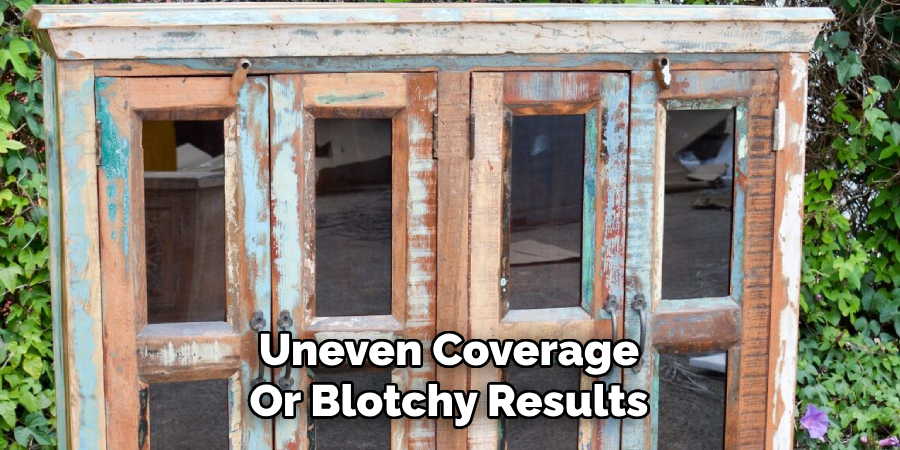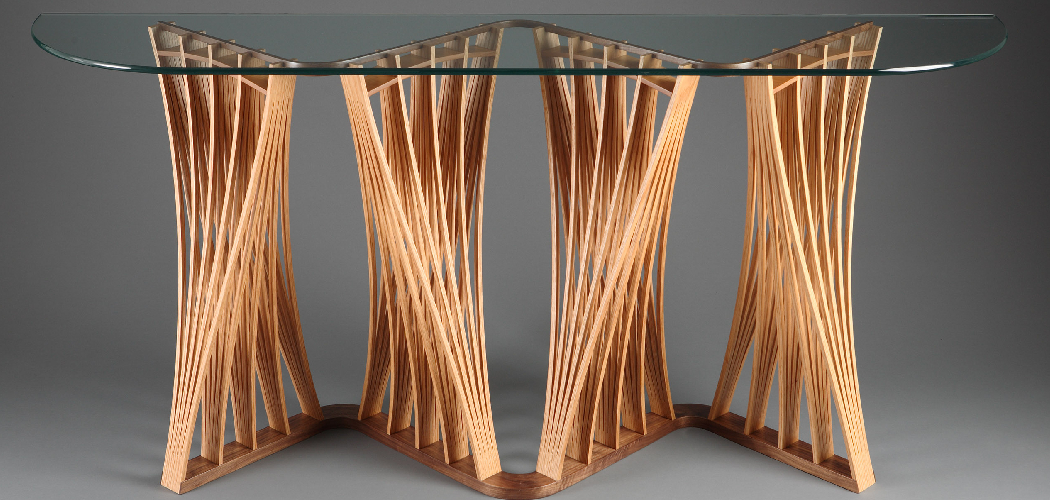Staining a reclaimed wood buffet is a fantastic way to enhance its natural beauty while preserving its rustic charm. Reclaimed wood often boasts unique textures, grain patterns, and imperfections that make each piece one of a kind.

Properly staining the wood not only enriches its appearance but also provides a protective layer to ensure its durability. This guide will walk you through the steps of how to stain reclaimed wood buffet, helping you create a timeless piece for your home.
Importance of Staining a Reclaimed Wood Buffet
Staining a reclaimed wood buffet is essential for both aesthetic and practical reasons. Firstly, it enhances the natural features of the wood, accentuating the grain patterns and unique imperfections that give reclaimed wood its character. Staining allows you to customize the appearance, whether you’re aiming for a light finish to maintain a natural look or a darker tone to complement a specific décor style.
On a practical level, the stain serves as a protective barrier, shielding the wood from moisture, dirt, and potential damage over time. This added layer of protection increases the durability of the buffet, ensuring it withstands daily use while maintaining its charm. By staining the wood, you preserve its beauty and prolong its lifespan, making it a worthwhile investment for generations to enjoy.
Preparing the Reclaimed Wood Buffet for Staining
Before applying the stain, proper preparation of the reclaimed wood buffet is essential to achieve a smooth and even finish. Start by examining the surface for any imperfections such as rough patches, splinters, or old paint residues. Use sandpaper of varying grits, beginning with a coarser grade to remove stubborn marks, and progressing to finer grit for a smooth, polished surface.
Be sure to sand along the grain of the wood to preserve its natural texture and avoid scratches. After sanding, thoroughly clean the surface with a soft cloth or vacuum to remove any dust and debris. For deeper cleanliness, you can use a damp cloth, but allow the wood to dry completely before proceeding. Finally, inspect the buffet for any cracks or gaps and fill them with wood filler if needed. This meticulous preparation ensures the wood is ready to absorb the stain evenly, resulting in a professional and aesthetically pleasing finish.
Tools and Materials Needed
To achieve the best results when refinishing your wood buffet, it’s important to have the right tools and materials on hand. Here’s a list of essentials:

- Sandpaper (various grits, such as 120, 180, and 220)
- Sanding block or electric sander
- Soft cloths or tack cloths for cleaning
- Vacuum with brush attachment
- Damp cloth for wiping away fine dust
- Wood filler for repairing cracks or gaps
- Putty knife for applying wood filler
- Stain or wood finish of your choice
- Paintbrush or staining sponge
- Gloves to protect your hands
- Drop cloth or plastic sheet to protect your workspace
- Mask or respirator for dust and fumes
Having these materials ready will streamline the process and ensure a smooth, high-quality finish for your project.
10 Methods How to Stain Reclaimed Wood Buffet
1. Prepare the Surface by Cleaning Thoroughly
Before applying stain, it’s crucial to clean the reclaimed wood buffet thoroughly. Dust, dirt, and old residues can prevent even stain absorption. Start by wiping the surface with a damp cloth, followed by a mild wood cleaner or a vinegar-water solution to remove grime. If the wood has stubborn grease or wax buildup, use mineral spirits with a soft rag. Allow the wood to dry completely before moving on to sanding and stain application.
2. Remove Old Finishes or Paint Layers
Reclaimed wood may have old varnish, paint, or sealants that can interfere with the new stain. If the buffet has a previous finish, use a chemical stripper or sand the surface to remove it. Apply the stripper evenly with a brush, wait for the recommended time, and then scrape off the loosened material. For paint removal, a heat gun can help soften layers before scraping. Once stripped, wipe the wood with a clean cloth and let it dry before sanding.
3. Sand the Surface for Smoothness
Sanding is essential to open the wood grain and ensure an even stain absorption. Start with medium-grit sandpaper (120-grit) to remove rough spots, then move to finer grit (220-grit) for a smooth finish. Be sure to sand along the grain to avoid scratches. If you want to maintain some rustic charm, lightly sand to retain the natural texture. After sanding, wipe off all dust with a tack cloth or vacuum to prepare the surface for staining.

4. Use a Wood Conditioner for Even Staining
Since reclaimed wood varies in porosity, some areas may absorb stain more heavily than others, leading to blotchy results. To prevent this, apply a pre-stain wood conditioner. Use a brush or cloth to spread the conditioner evenly, following the wood grain. Let it sit for about 10-15 minutes before wiping off the excess. This step is especially important for softwoods like pine or woods with mixed densities.
5. Select the Right Stain Type for Desired Finish
Choosing the right stain is key to achieving your preferred aesthetic. Oil-based stains penetrate deeply and provide a rich, long-lasting color, while water-based stains dry faster and offer a more natural appearance. Gel stains are ideal for vertical surfaces and reclaimed wood with uneven grain. Test different stain colors on a scrap piece of wood to ensure it complements the buffet’s natural character before applying it to the entire piece.
6. Apply Stain with a Brush or Cloth
Once you’ve selected the stain, apply it using a high-quality brush, foam applicator, or lint-free cloth. Work in small sections, following the wood grain to ensure an even coat. Let the stain sit for a few minutes, then wipe away excess stain with a clean cloth to prevent uneven coloring. If a deeper color is desired, apply additional coats after allowing each layer to dry fully.
7. Create a Weathered or Distressed Look
If you want your reclaimed wood buffet to have a weathered or aged look, consider distressing the wood before staining. Lightly sand edges, use a wire brush to add texture, or apply a whitewash technique by diluting white paint with water before staining. Alternatively, use a stain layering method, applying a light base stain first and a darker shade over it to create depth and dimension.
8. Use Multiple Stain Colors for Depth
To enhance the unique grain and character of reclaimed wood, experiment with multiple stain colors. Start with a lighter base coat, then apply a darker shade in selective areas using a rag or brush. This technique mimics the natural aging process of wood and adds visual interest to the buffet. Blending colors can also create a custom finish that complements your home’s decor.
9. Seal and Protect the Stained Surface
After staining, sealing the buffet is essential to protect the wood and enhance the color depth. Choose a polyurethane, wax, or oil-based finish depending on your desired sheen and durability. Polyurethane provides a strong protective coat, while wax or tung oil enhances the natural feel of reclaimed wood. Apply the sealer with a brush or cloth, following the grain, and allow it to dry completely before using the buffet.

10. Maintain the Stained Finish Over Time
To keep your stained reclaimed wood buffet looking great for years, regular maintenance is necessary. Dust the surface frequently and use a mild wood cleaner to prevent buildup. Avoid placing hot or wet items directly on the surface to prevent stains or warping. If scratches or fading occur, lightly sand the area and reapply a touch of stain and sealer to restore the finish.
Things to Consider When Staining Reclaimed Wood
Wood Preparation
Carefully inspect the reclaimed wood before starting. Ensure it is free of nails, screws, or other debris that could interfere with the staining process. Sanding the wood thoroughly helps to smooth out imperfections and enhances the absorption of the stain.
Type of Stain
Consider the type of stain that works best for the look you want to achieve. Water-based stains are eco-friendly and dry quickly, while oil-based stains provide richer colors and deeper penetration.
Environmental Conditions
Staining should be done in a well-ventilated area with stable temperature and humidity levels. Extreme conditions can affect how the stain dries and adheres to the wood.
Protective Gear
Wear gloves and a mask to protect yourself from fumes and chemicals. This is especially crucial when using strong or oil-based stains.
Testing Before Application
Always test the stain on a small, inconspicuous area of the wood to ensure it produces the desired color and finish before applying it to the entire piece.
Layering Stains
Applying multiple thin layers of stain allows for better control of color intensity. Thick applications can lead to uneven coverage or blotchy results.

Conclusion
Staining a reclaimed wood buffet requires careful preparation, the right staining techniques, and proper finishing for a lasting result. Whether you aim for a rustic charm, a contemporary look, or a deeply aged patina, these ten methods will help you achieve a stunning and durable finish. By following these steps, you can enhance the beauty of reclaimed wood while preserving its unique history and character. So, there you have it – a quick and easy guide on how to stain reclaimed wood buffet.

